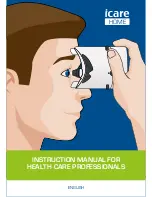
81
you should calm the patient or replace sites in order to reduce the impact of excessive
movement.
Warning
In a long and continuous monitoring process, check the condition of the peripheral circulation
and skin under measuring every 2 hours or so, and if negative conditions happen, timely change
the site under measurement.
In a long and continuous monitoring process, it is advisable to check periodically the positioning
of the probe to avoid inaccurate measurement due to changing in the positioning from moving
or other factors.
13.4
Measurement restriction
Measurement restriction
During operation, the following factors may affect accuracy of SpO
2
measurement:
High-frequency electric disturbance, such as disturbance generated from the system itself or
electrosurgery equipments connected with the system;
A photo-oximeter and SPO
2
sensor are used during MRI process, as the inductive current may cause
burns;
Intravenous Dye;
Frequent movement by patient;
Light radiation from outside;
Improper installation of the sensor or improper touching position with objects;
Improper sensor temperature (ideal temperature should be 28
℃
-42
℃
);
The sensor is put onto body with blood pressure cuff, arterial duct or vein tube;
Contents of non-functional Hb such as COHb and MetHb;
SPO
2
over low;
Bad microvascular perfusion at the test position;
Shock, anemia, low temperature and application of vessel shrinking medicines, which all can reduce
the arterial blood flow to a non-measurable level;
Measurement is also up to absorption of lights with special wavelengths by oxyhemoglobin and
deoxygenated hemoglobin. Existence of other materials that absorbs the same wavelengths, such as
carbonated hemoglobin, hemoglobin, methylene blue and indi carmine, will make artificial or low
SPO
2
values.
SPO
2
sensor introduced in the accessory is recommended.
















































